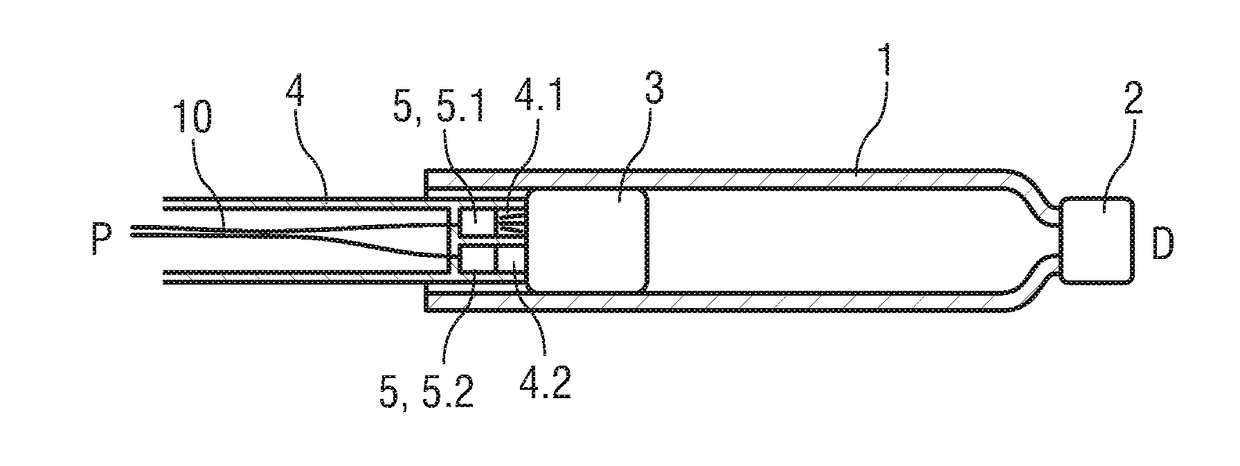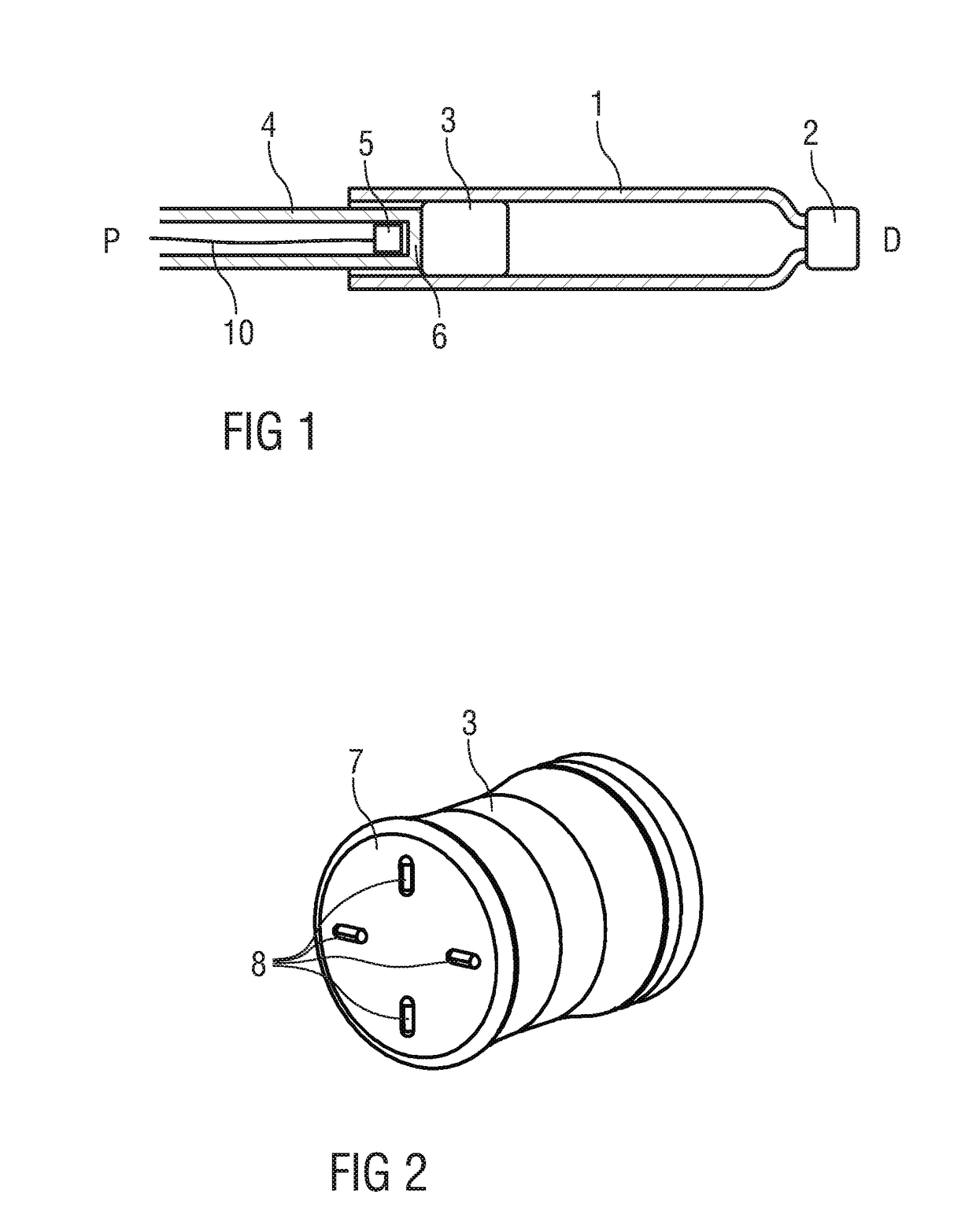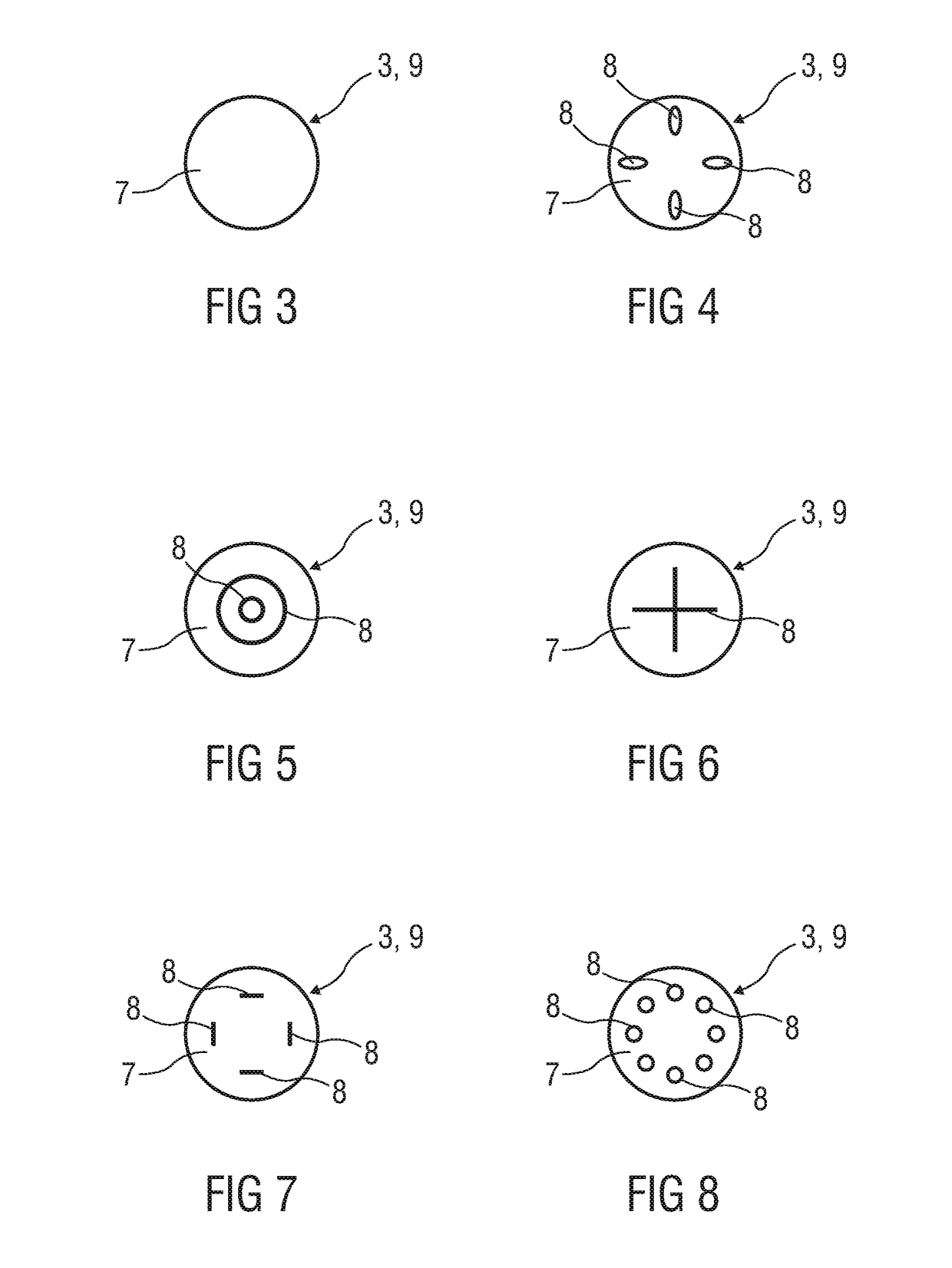Arrangement for Detecting a Position of a Plunger
- Summary
- Abstract
- Description
- Claims
- Application Information
AI Technical Summary
Benefits of technology
Problems solved by technology
Method used
Image
Examples
Embodiment Construction
[0038]FIG. 1 is a schematic longitudinal detail section of an exemplary embodiment of a drug cartridge 1 or syringe with a septum 2 or discharge nozzle at a distal end and a bung 3 or stopper disposed within the cartridge 1 near a proximal end. A plunger 4 is arranged for displacing the bung 3 within the cartridge 1 for dispensing the drug contained within the cartridge 1.
[0039]A proximity sensor 5 arranged as an imaging sensor is disposed within the plunger 4. The proximity sensor 5 can be of any type suitable for imaging, but preferentially may be of the type comprising a light source, light sensor, lens and processing unit. The proximity sensor 5 is located close to a flat transparent distal end 6 of the plunger 4 facing the bung 3 and aligned to image the bung 3.
[0040]FIG. 2 is a schematic perspective view of an exemplary embodiment of the bung 3. In this embodiment the bung 3 consists of or comprises a compliant material and has a substantially flat proximal face 7 with a surfa...
PUM
 Login to View More
Login to View More Abstract
Description
Claims
Application Information
 Login to View More
Login to View More - R&D
- Intellectual Property
- Life Sciences
- Materials
- Tech Scout
- Unparalleled Data Quality
- Higher Quality Content
- 60% Fewer Hallucinations
Browse by: Latest US Patents, China's latest patents, Technical Efficacy Thesaurus, Application Domain, Technology Topic, Popular Technical Reports.
© 2025 PatSnap. All rights reserved.Legal|Privacy policy|Modern Slavery Act Transparency Statement|Sitemap|About US| Contact US: help@patsnap.com



